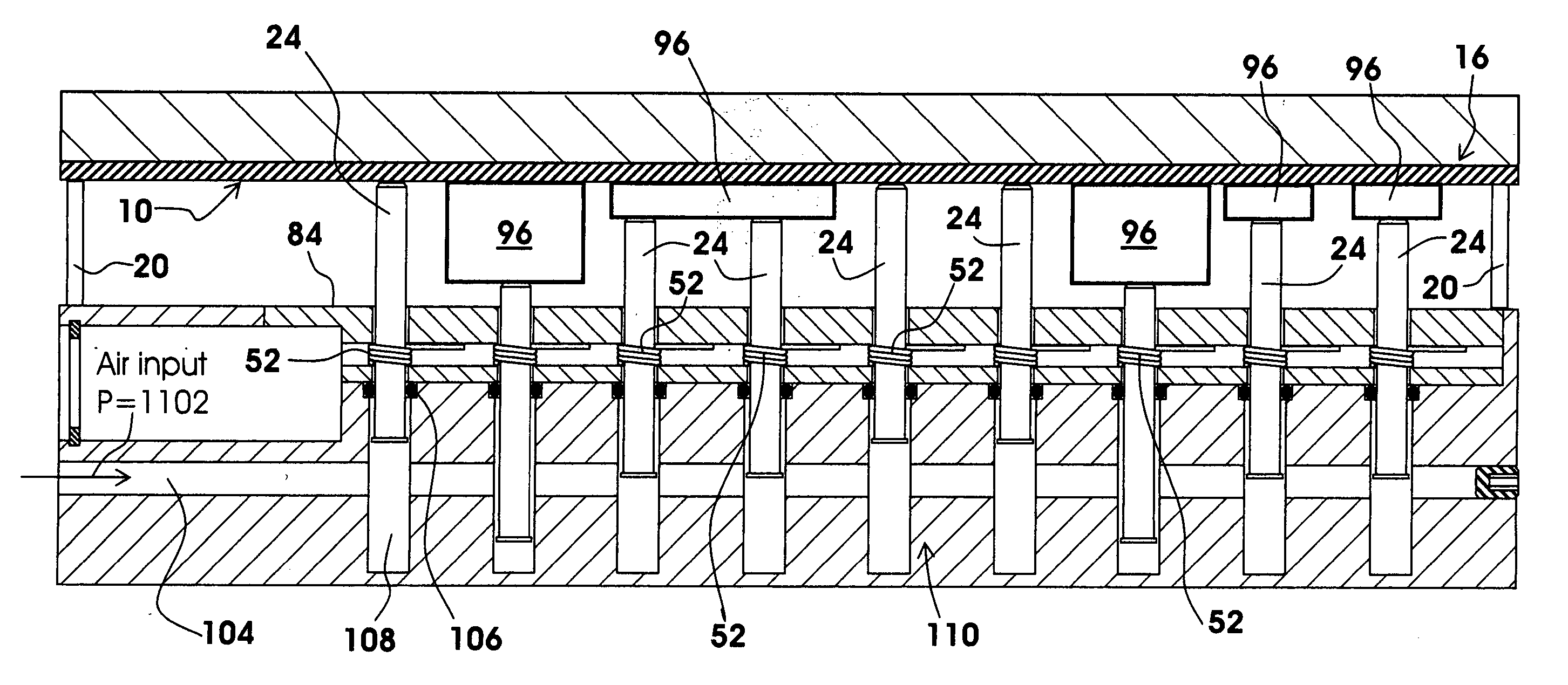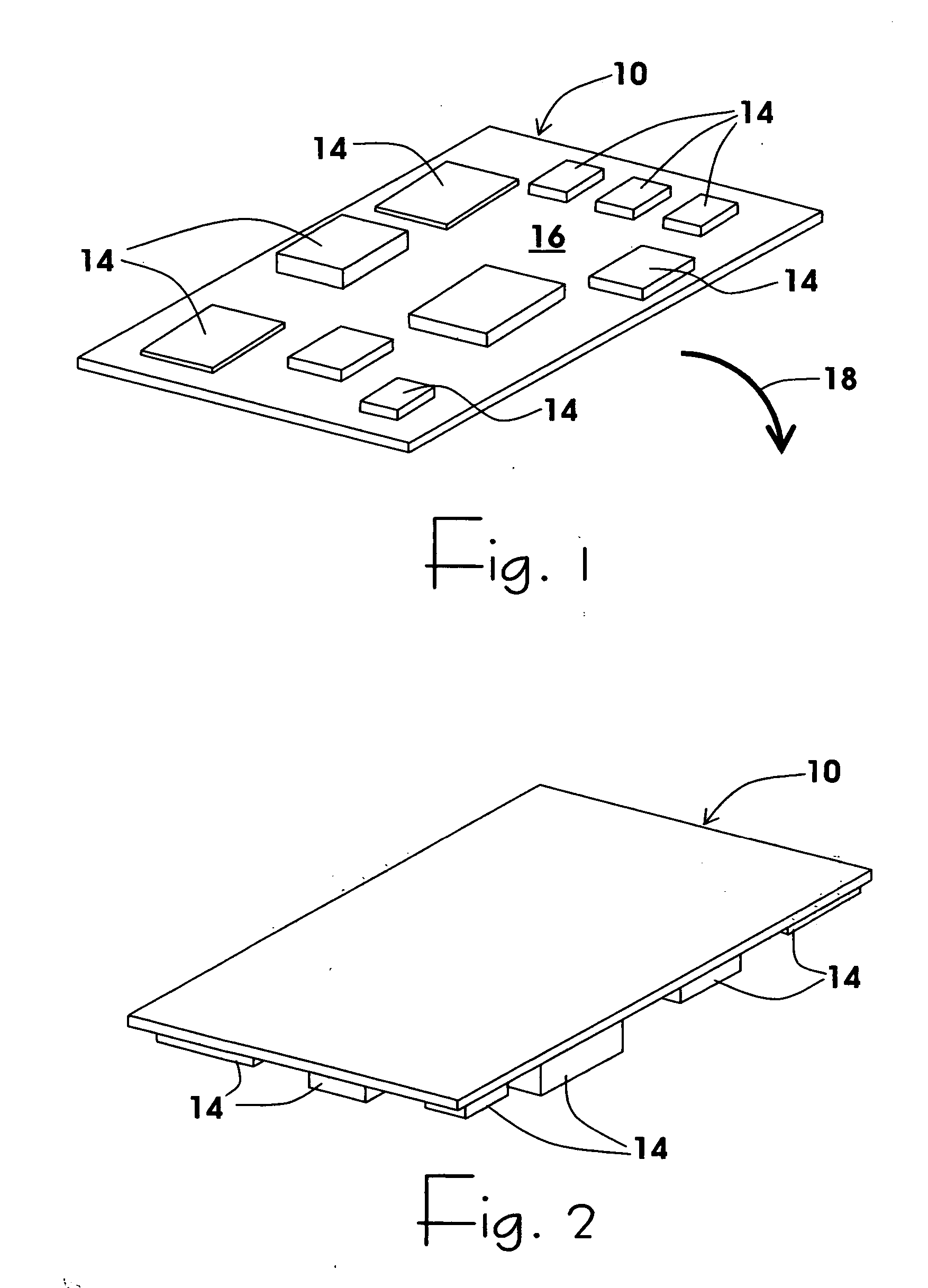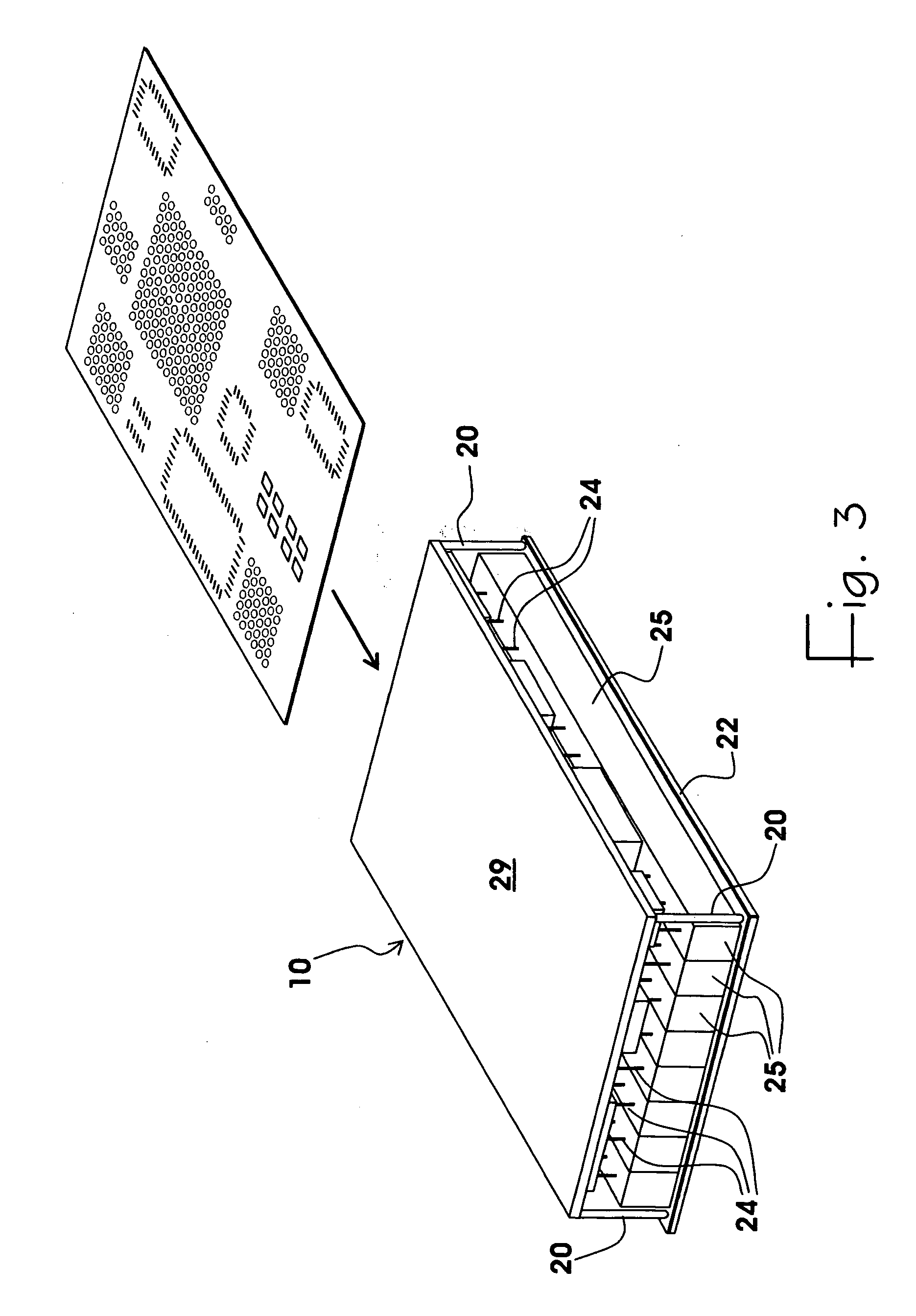Pin locking method and apparatus for pin-supported workpieces
a technology of pins and workpieces, applied in the direction of clamps, electrical equipment, manufacturing tools, etc., can solve the problems of printing circuit board flexure, unusability, and difficulty in supporting a double-sided board that has been partially populated on its underside, and achieve the effect of accurate pre-calculation, exceptional locking force, and inexpensive and robust pin locking mechanisms
- Summary
- Abstract
- Description
- Claims
- Application Information
AI Technical Summary
Benefits of technology
Problems solved by technology
Method used
Image
Examples
Embodiment Construction
[0055] What is now presented is a method for using a pin array support that is trained on a bottom side populated circuit board in which the pins extend to touch the bottom side of the board where they are then locked in place.
[0056] Referring now to FIG. 1, what is illustrated is a training board 10 having a number of components 14 populated on the topside 16 of the printed circuit board. Upon population of the components on top of the to-be double-sided printed circuit training board, it is inverted or flipped over as illustrated by arrow 18 so as to achieve the orientation illustrated in FIG. 2 with components 14 pointed in a downward direction. The result is an irregular or contoured underside. It will be appreciated that being able to support such circuit board that is bottom side populated to provide a flat top surface requires a support structure that can be configured to accommodate and support the various components on the underneath side of the circuit board as well as th...
PUM
 Login to View More
Login to View More Abstract
Description
Claims
Application Information
 Login to View More
Login to View More - R&D
- Intellectual Property
- Life Sciences
- Materials
- Tech Scout
- Unparalleled Data Quality
- Higher Quality Content
- 60% Fewer Hallucinations
Browse by: Latest US Patents, China's latest patents, Technical Efficacy Thesaurus, Application Domain, Technology Topic, Popular Technical Reports.
© 2025 PatSnap. All rights reserved.Legal|Privacy policy|Modern Slavery Act Transparency Statement|Sitemap|About US| Contact US: help@patsnap.com



